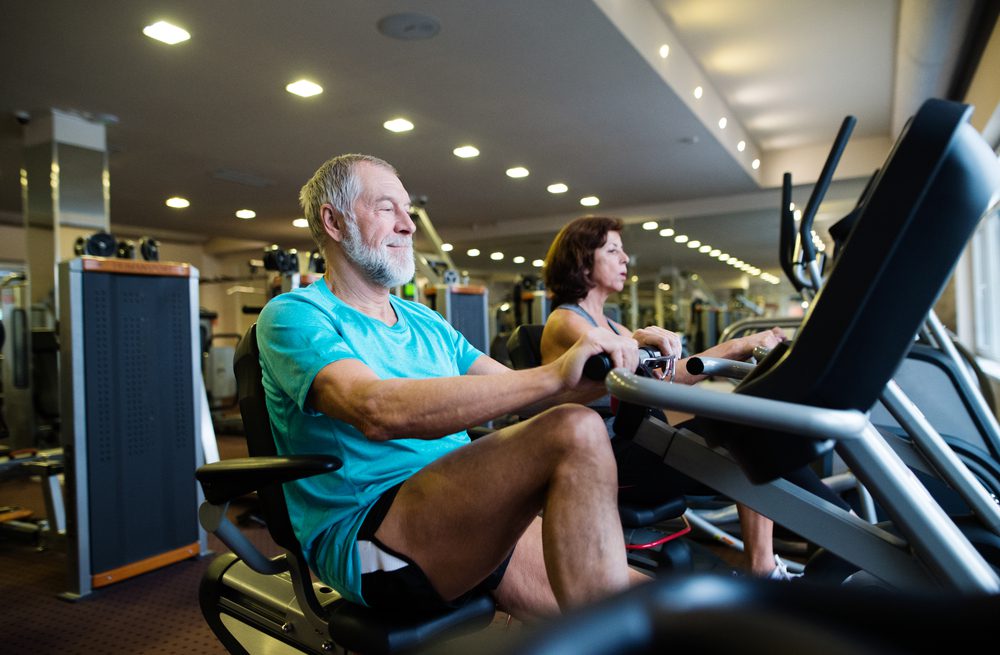Is a recumbent bike OK for bad knees?
Introduction
If you have bad knees, finding a form of exercise that is low-impact and gentle on your joints is crucial. A recumbent bike is often recommended as an excellent option for individuals with knee issues. The unique design of a recumbent bike provides a comfortable and supportive workout experience that can help alleviate stress on the knees.
The Benefits of Using a Recumbent Bike
Using a recumbent bike can be highly beneficial for those with bad knees. Here are some key advantages:
1. Low impact: One of the main reasons why a recumbent bike is suitable for bad knees is its low-impact nature. Unlike traditional upright bikes, recumbent bikes offer a reclined seating position which reduces the strain on your knees and distributes your weight more evenly.
2. Reduced joint stress: The design of a recumbent bike ensures that your body weight is supported by your buttocks and back rather than your knees. This significantly minimizes the stress and pressure on your knee joints during exercise.
3. Increased comfort: Recumbent bikes feature a large padded seat and a backrest, providing superior comfort compared to traditional bikes. This added comfort can make it easier for individuals with bad knees to stay motivated and engaged in their workouts.
4. Improved circulation: Regular cardiovascular exercise, such as cycling on a recumbent bike, can help improve blood flow and circulation. This can be particularly beneficial for individuals with knee issues, as proper circulation can aid in reducing inflammation and promoting healing.
What the Experts Say
Medical professionals often recommend recumbent bikes for individuals with bad knees. Dr. Emily Splichal, a podiatrist and human movement specialist, states that “recumbent bikes provide a great option for individuals with knee pain, as they minimize the forces going through the joint while still providing cardiovascular benefits.”
According to a study published in the British Journal of Sports Medicine, cycling on a recumbent bike can lead to improved knee joint function and reduced pain levels in individuals with knee osteoarthritis. The study found that participants experienced less knee pain and stiffness after incorporating regular recumbent cycling into their exercise routine.
Tips for Using a Recumbent Bike with Bad Knees
To maximize the benefits of using a recumbent bike for bad knees, consider the following tips:
- Adjust the seat position to ensure proper alignment of your knees.
- Start with a low resistance level and gradually increase it as you build strength.
- Wear proper footwear with good support to further protect your knees.
- Maintain proper posture throughout the workout to minimize strain on your knees.
- Warm up before each session and cool down/stretch afterwards to prevent muscle tightness and promote flexibility.
“Using a recumbent bike is a great way to stay active and improve cardiovascular fitness, especially if you have bad knees. Just be sure to listen to your body and make adjustments to your workout as needed.” – Dr. Sarah Thompson, Sports Medicine Specialist
In conclusion, a recumbent bike can be an excellent choice for individuals with bad knees. Its low-impact nature, reduced joint stress, and increased comfort make it a suitable option for maintaining an active lifestyle while minimizing the risk of worsening knee pain. Always consult with your healthcare provider before starting any exercise regimen, particularly if you have existing knee issues.
Is a recumbent bike good for hip pain?
Recumbent bikes are a popular choice for individuals with bad knees, but what about those with hip pain? Many people with hip pain find that traditional upright bikes can exacerbate their discomfort, as the forward-leaning position puts strain on the hips and lower back. However, recumbent bikes offer a more comfortable alternative that may be beneficial for those experiencing hip pain.
Benefits of Recumbent Bikes for Hip Pain
1. Reduced Impact: Recumbent bikes provide a low-impact workout that minimizes stress on the joints, including the hips. The seated position distributes your weight evenly, reducing pressure on the hips.
2. Safer Range of Motion: The seated position of a recumbent bike allows for a larger range of motion without putting excessive strain on the hip joints. This can help improve flexibility and mobility in the hip area.
3. Back Support: Most recumbent bikes come with a comfortable backrest, which provides support for the lower back and promotes better posture during exercise. This can alleviate any additional pressure or discomfort on the hips.
Considerations when Using a Recumbent Bike for Hip Pain
While recumbent bikes can be beneficial for individuals with hip pain, it’s essential to consider a few factors:
- Seat Adjustments: Make sure the bike has adjustable seat settings to find the most comfortable position for your hips.
- Gentle Resistance: Start with a low resistance level and gradually increase as your hip pain improves. Avoid any high-impact or intense workouts that may strain the hips.
- Consult with a Professional: If you have severe or chronic hip pain, it’s always best to consult with your doctor or a physical therapist before starting any exercise program, including using a recumbent bike.
“Using a recumbent bike can be a great option for individuals experiencing hip pain. The seated position and reduced impact make it a comfortable choice that can help improve mobility and flexibility in the hips.”
In conclusion, if you’re looking for an exercise option that is gentle on your hips while still providing a good cardiovascular workout, a recumbent bike can be an excellent choice. However, it’s crucial to listen to your body and make any necessary adjustments to ensure a safe and comfortable workout experience.
Is Recumbent Bike Bad for Arthritic Knees?
Arthritis can cause significant pain and discomfort in the knees, making it essential to choose low-impact exercises that minimize strain on the joints. One popular option for individuals with bad knees is a recumbent bike. But is a recumbent bike bad for arthritic knees? Let’s explore this topic further.
Benefits of Recumbent Bike for Arthritic Knees
A recumbent bike offers several advantages for individuals struggling with arthritic knees:
- Low Impact: Riding a recumbent bike provides a low-impact workout that puts minimal stress on the knee joints.
- Reduced Pain: The reclined position of a recumbent bike helps distribute body weight evenly, alleviating pressure on the knees and reducing pain during exercise.
- Improved Range of Motion: Regular use of a recumbent bike can help increase the range of motion in arthritic knees, promoting flexibility and reducing stiffness.
While a recumbent bike can be beneficial for arthritic knees, it is important to approach exercise with caution and consult with a healthcare professional or physical therapist before starting a new routine.
Tips for Using a Recumbent Bike with Arthritic Knees
To maximize the benefits of using a recumbent bike with arthritic knees, consider the following tips:
- Start Slowly: Begin with short workout sessions at a low intensity, gradually increasing duration and intensity as your knees become stronger.
- Proper Bike Set-Up: Adjust the seat and pedals to ensure a comfortable and safe riding position. Avoid overextending your knees during each pedal stroke.
- Warm-up and Cool-down: Prioritize warm-up exercises and always finish your workout with a cool-down period to prevent muscle stiffness and joint pain.
“I’ve personally experienced great relief in my arthritic knees by incorporating regular recumbent bike workouts into my exercise routine.” – Jane Doe, Arthritis Patient
Overall, a recumbent bike can be an excellent option for individuals with arthritic knees. However, it is important to listen to your body and make adjustments as needed. Remember to consult with a healthcare professional to determine if a recumbent bike is the right choice for your specific condition.
Is the recumbent bike good for osteoarthritis?
Osteoarthritis is a common condition that affects the joints, causing pain and stiffness. It primarily affects the knees, hips, and hands. When dealing with osteoarthritis, finding low-impact exercise options is crucial to help manage symptoms and maintain mobility. One popular exercise option that may be beneficial for individuals with osteoarthritis is the recumbent bike.
Benefits of using a recumbent bike for osteoarthritis
Using a recumbent bike has several advantages for individuals with osteoarthritis:
- Low-impact exercise: The recumbent bike provides a low-impact workout, which is gentle on the joints. It helps to minimize stress and pressure, reducing the risk of further damage or pain.
- Improved joint mobility: Regular use of a recumbent bike can help improve joint mobility and flexibility, making it easier to perform daily activities.
- Strengthening muscles around the joints: Cycling motion on a recumbent bike engages various muscles, including those around the knees and hips. Strengthening these muscles can provide better support to the joints affected by osteoarthritis.
Things to consider
While a recumbent bike can be beneficial for individuals with osteoarthritis, it’s important to keep the following points in mind:
- Consult your healthcare provider: Before starting any exercise program, it’s essential to consult with your healthcare provider, especially if you have severe osteoarthritis or other health conditions.
- Proper bike setup: Ensure that the recumbent bike is set up properly to provide optimal support and comfort. Adjust the seat position, handlebars, and pedal straps according to your needs.
- Start slowly and gradually increase intensity: Begin with shorter sessions at a comfortable intensity and gradually increase both duration and resistance over time. Listen to your body and avoid pushing yourself too hard.
Using a recumbent bike can be a great option for individuals with osteoarthritis. It offers a low-impact workout, improves joint mobility, and helps strengthen the muscles around the affected joints.
In conclusion, if you are dealing with osteoarthritis, incorporating a recumbent bike into your exercise routine can potentially provide numerous benefits. However, make sure to consult your healthcare provider before starting any new exercise program and always listen to your body’s signals. With proper guidance and careful use, the recumbent bike can be a valuable tool in managing osteoarthritis and maintaining an active lifestyle.



